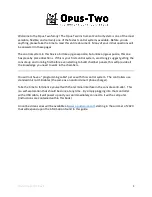
Gen II
User Manual
14-4 – Vibration Spectrum Survey
Chapter 14
Revision 4.10, Apr 2020
Viper II
Cobra II
14.1.1.1.
– Vibration Spectrum Setup Screen
14.1.1.1.1.
In the “
Name
” field, enter a name for this setup using the keypad. The name you choose
will aid you in differentiating this setup from other stored setups should you choose to
use or review it at a later time. The name should be one of your choosing which will be
easily recognized and associated with this setup such as “Citation 10”, “Lear 45”, or
“CF34-3A”.
14.1.1.1.2.
Using the [
] key, move to the frequency unit field which is defaulted to “RPM”. The
two selections are RPM and Hz. Determine if the display frequency units are to be in
revolutions per minute (RPM) or cycles per second (Hz), then use the [
] key to
“toggle” between the two selections in this field. If the frequency unit you desire is not
currently in the field, press the [
] key to toggle between the two choices until your unit
is shown in the field.
14.1.1.1.3.
Use the [
] key to move to the minimum frequency field, immediately to the right of the
frequency unit field. Use the analyzer keypad to enter the minimum frequency of interest
for this survey relative to the frequency units selected in paragraph 14.1.1.1.2 above. If
you desire a high pass frequency, such as 40 Hz, the minimum frequency field should
reflect this as the minimum frequency of interest.
14.1.1.1.4.
Use the [
] key to move to the maximum frequency field, immediately to the right of the
word “to” and the minimum frequency field. Use the analyzer keypad to enter the
highest frequency of interest for this survey relative to the frequency units selected in
paragraph 14.1.1.1.2 above. You should also consider other factors such as Harmonics. If
you want multiples of the fundamental frequency included in the frequency range,
determine to what extent that need is (1X, 2X, 3X, and so on) then extend the frequency
range to include it. For example, 300Hz is the frequency of interest, the fundamental
frequency. If you want 3X harmonics included in the frequency range you must multiply
the fundamental frequency (300 Hz) X the harmonic range (3X) and arrive at an upper
range of 900 Hz.
















































